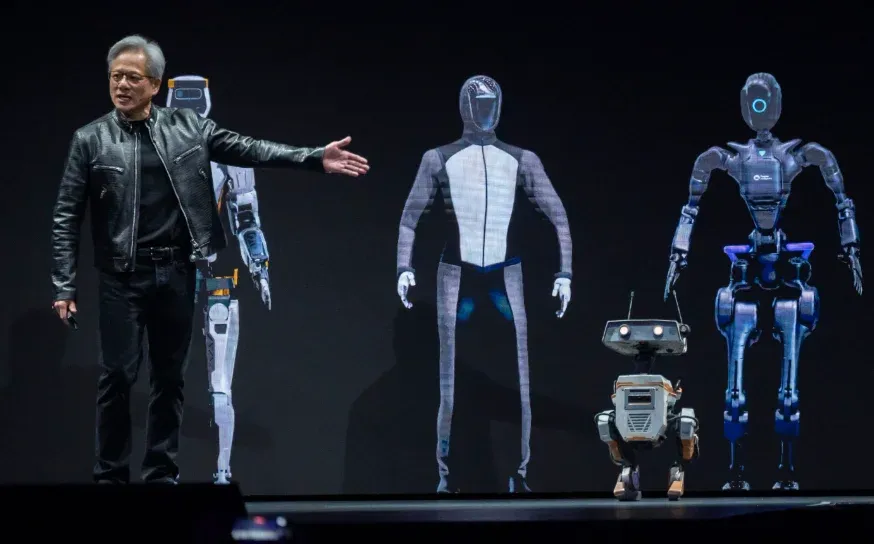Nvidia is setting its sights on revolutionizing robotics through artificial intelligence, with CEO Jensen Huang predicting a “multitrillion-dollar” opportunity ahead.
At the Consumer Electronics Show (CES) in Las Vegas, Huang revealed an ambitious roadmap for Nvidia’s growth in the emerging “physical AI” space, alongside new products and strategic partnerships.
Pushing Boundaries in AI and Robotics
Once known solely for its video game graphics chips, Nvidia has transformed into one of the world’s most valuable companies, surpassing a $3 trillion market cap.

The company is now leveraging its expertise to build software for training and deploying robots, from smart factory systems to self-driving cars and humanoid robots.
Huang highlighted the immense potential of robotics, stating that cracking the challenges of large-scale deployment could lead to “the largest technology industry the world has ever seen.”
Key announcements included:
-
Cosmos Platform: A suite of foundational AI models trained on 20 million hours of video data, designed to help developers generate data and build their own models for free.
-
Omniverse Integration: The Cosmos platform pairs with Nvidia’s Omniverse, enabling simulations of the physical world to train robots more effectively.
-
GR00T Blueprint: A collection of foundation models tailored for humanoid robots to accelerate their development.
Rev Lebaredian, Nvidia’s VP for Omniverse and simulation technology, noted that these advancements were as significant as the large language models powering tools like OpenAI’s ChatGPT. He described this moment as an “inflection point” for physical AI and robotics.
Expanding Market Opportunities
While robotics and simulation currently represent a small portion of Nvidia’s revenue, the company is poised for growth. Highlights include:
- Autonomous Vehicles: Nvidia’s automotive business is projected to grow to $6 billion by 2026.
Toyota will build its next-gen autonomous vehicles using Nvidia’s Drive AGX hardware and software, while companies like Aurora and Continental will deploy Nvidia’s solutions in driverless trucks.
- Self-Driving Cars: Huang referred to autonomous vehicles as the “first multitrillion-dollar robotics industry.”
AI for Everyone
Nvidia also unveiled a “personal AI supercomputer” featuring its latest Blackwell AI chip. Priced at $3,000, this device will allow researchers and students to run complex AI models locally rather than relying on cloud services. It’s set to launch in May, marking another step toward making AI more accessible.
Challenges Ahead
As Nvidia ventures into new markets, it faces competition from major players like Amazon and Microsoft, which are developing in-house AI chips.
Analysts from Bank of America highlighted the hurdles of making AI-driven robotics scalable, affordable, and reliable enough to support sustainable business models.
Nvidia’s bold moves in physical AI and robotics signal the next phase of its evolution. With foundational AI models, strategic partnerships, and a vision for autonomous industries, the company is positioning itself as a leader in reshaping the future of robotics.







